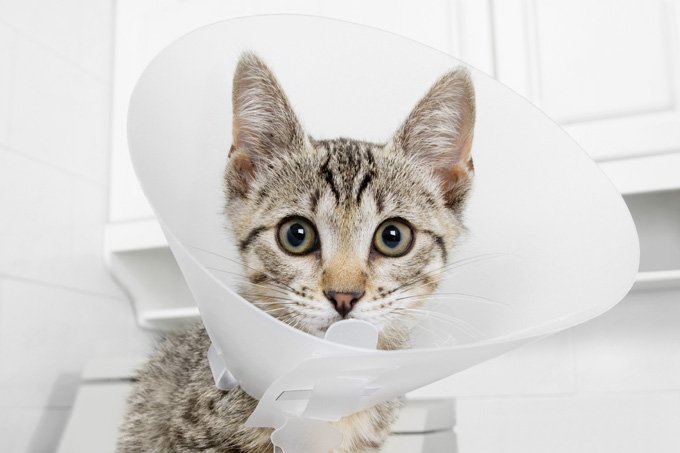This article courtesy of PetMD.com.
Gingival Fibrosarcoma in Cats
As cats age, they sometimes develop growths in their mouths. One type of growth is a fibrosarcoma, a cancerous growth derived from fibrous connective tissue. Fibrosarcomas are relatively low in malignancy, growing slowly and generally not spreading to other organs, though they do aggressively invade other tissue and bone that is near them. The most common location for a fibrosarcoma of the the mouth is in the gums (gingiva).
Cats that are afflicted with gingival fibrosarcomas are, on average, seven and a half years old, but these tumors have been seen in cats from the age of six months to fifteen years. Gender appears to play some role, with male cats being seen for gingival tumors more often that female cats.
Symptoms and Type
- Excess salivation
- Bad breath (halitosis)
- Loose teeth
- Difficulty picking up food
- Difficulty chewing food (dysphagia)
- Blood coming from the mouth
- A growth in the mouth
- Weight loss
Causes
The causes for gingival fibrosarcomas are unknown.
Diagnosis
Your veterinarian will need a thorough history of your cat’s health, onset of symptoms, and possible incidents that might have preceded this condition. For example, when your cat stopped eating, when you noticed its teeth were loose, how much weight it has lost, etc. A mass or tumor in the mouth will be apparent during the physical examination, and the location of the swelling will be differentiated from the gums or the lymph nodes beneath the jawline. Standard tests include a complete blood count and biochemical profile to confirm that your cat’s internal organs are in healthy functioning order. Your veterinarian may also order x-ray images of the thorax (chest) to make sure that there is no evidence that the tumor has spread into the lungs. X-rays of the skull will also be taken to see if any of the skull bones have been affected by the tumor. In some cases, a computed tomography (CT) scan can be utilized to determine how severely affected the skull bones are are how far the tumor has metastasized (spread) into the bone. Your veterinarian will also take a biopsy of the tumor for laboratory analysis. This will help your doctor to determine exactly what type of tumor is in your cat’s mouth.
Treatment
Treatment depends on how large the tumor is and how much of the surrounding bone is affected by the tumor. If the tumor is very small and does not affect any of the surrounding bone, it may be removed through a technique that uses freezing (cryosurgery). Generally, a large amount of surrounding tissue must be removed along with the tumor. In some cases, this means that part of the lower jaw must be removed (hemimandibulectomy) along with the tumor. Most cats recover well after this type of surgery.
If the tumor is too large to be removed safely, radiation therapy and/or chemotherapy may help to control the tumor and its symptoms for a while.
Living and Management
If your cat’s tumor is removed by cryosurgery, its mouth will be sore for a while. You will need to give your cat food that is soft enough that it does not need to be chewed. This way your cat will be able to continue to eat as its mouth heals and return to feeling normal as quickly as possible. Your veterinarian can advise you on some appropriate food options.
If your cat has had surgery to remove the tumor and part of its lower jaw, it will stay in the hospital for several days after surgery until it has stabilized. It will need to be fed intravenously (IV) during this stage of recovery. Your veterinarian will monitor your cat’s pain level and its ability to eat and drink. Once your cat is able to go home, it will probably need to eat soft food for some time after. Because part of the lower jaw is missing, it will take longer for your cat to eat a meal as it learns to compensate for the missing bone. In some cases, you will need to sit with your cat and assist it, feeding it small amounts of food by hand. Your cat may be given pain medication to help it though the roughest part of the recovery stage. Follow your veterinarian’s directions carefully regarding the medications, the amount and frequency, to avoid overdose.
If your cat is not able to have surgery because of complications that would make it too dangerous, your veterinarian may recommend either radiation therapy or chemotherapy. Chemotherapy can either be given by IV, or directly into the tumor. Both of these therapiesI can help to reduce the size of the tumor and your cat’s symptoms. Keep in mind that radiation therapy can also make the mouth sore, so your cat will need to eat soft food until the pain passes. Your cat may be given pain medication to help with the soreness. The drugs used for this type of treatment can sometimes cause nausea and vomiting. If your cat is being affected by this side-effect you may be given medications to help control the nausea so that your cat can continue to eat normally. Follow all medication directions carefully and consult your veterinarian if you should ever be in doubt. Overdose of medication is one of the most preventable causes of death in cats.
This article originally appeared here on PetMD.com.









